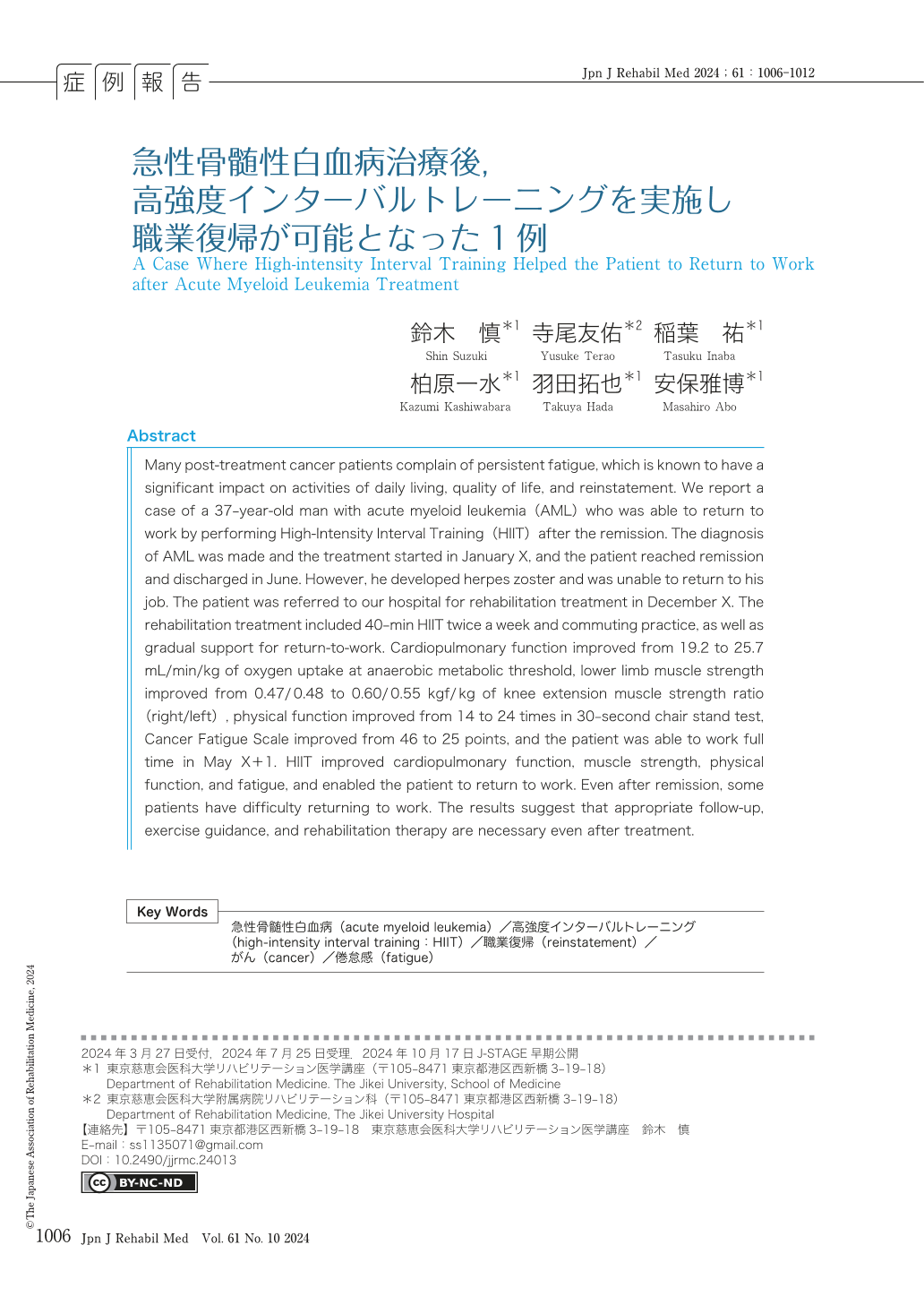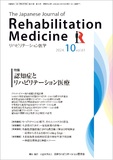Japanese
English
- 販売していません
- Abstract 文献概要
- 1ページ目 Look Inside
- 参考文献 Reference
はじめに
急性骨髄性白血病(acute myeloid leukemia:AML)は分化,成熟能が障害された幼若骨髄系細胞のクローナルな自律性増殖を特徴とする多様性に富む血液腫瘍である.骨髄における白血病細胞の異常な増殖の結果,正常な造血機能は著しく阻害され,白血球減少,貧血,血小板減少に伴うさまざまな症状を呈する.現在では化学療法と支持療法の改善により,AMLの長期生存者数は増加している1).
化学療法後1年間生存した成人AML患者111人を対象に職業復帰を果たしたかを検討した論文では,身体機能とquality of life(QOL)が改善するに従い,36カ月までに54%が職業復帰を果たし,段階的に失業,退職,病気休暇中の患者の数が減少することが報告されている2).しかし,少数ではあるが治療後36カ月経った後も職業復帰できずにいる患者もいることも示され,社会的,身体的リハビリテーション治療が必要であることが示唆される.
また,高強度インターバルトレーニング(high intensity interval training:HIIT)はがん患者やがんサバイバーに対する安全かつ効果的な運動療法であることが示されている3).今回,急性骨髄性白血病に対する治療後,社会復帰できずにいた患者に対して,HIITを行い,筋力,身体機能,倦怠感が改善し,職業復帰が可能になった症例を経験したので報告する.
なお,本論文は,「症例報告を含む医学論文及び学会研究会発表における患者プライバシー保護に関する指針」を遵守し,論文投稿することについて患者本人に説明を行い,書面にて同意を得ている.
Abstract Many post-treatment cancer patients complain of persistent fatigue, which is known to have a significant impact on activities of daily living, quality of life, and reinstatement. We report a case of a 37-year-old man with acute myeloid leukemia (AML) who was able to return to work by performing High-Intensity Interval Training (HIIT) after the remission. The diagnosis of AML was made and the treatment started in January X, and the patient reached remission and discharged in June. However, he developed herpes zoster and was unable to return to his job. The patient was referred to our hospital for rehabilitation treatment in December X. The rehabilitation treatment included 40-min HIIT twice a week and commuting practice, as well as gradual support for return-to-work. Cardiopulmonary function improved from 19.2 to 25.7 mL/min/kg of oxygen uptake at anaerobic metabolic threshold, lower limb muscle strength improved from 0.47/0.48 to 0.60/0.55 kgf/kg of knee extension muscle strength ratio (right/left), physical function improved from 14 to 24 times in 30-second chair stand test, Cancer Fatigue Scale improved from 46 to 25 points, and the patient was able to work full time in May X+1. HIIT improved cardiopulmonary function, muscle strength, physical function, and fatigue, and enabled the patient to return to work. Even after remission, some patients have difficulty returning to work. The results suggest that appropriate follow-up, exercise guidance, and rehabilitation therapy are necessary even after treatment.

Copyright © 2024, The Japanese Association of Rehabilitation Medicine. All rights reserved.


